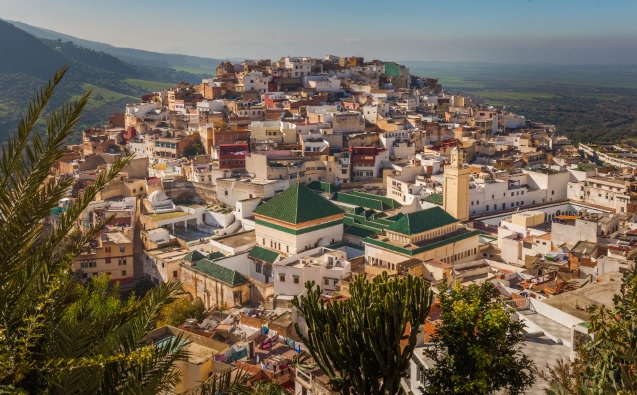The Telegraph by
Paula Hardy, Destination Expert
Morocco may be a short hop across the Mediterranean from Europe, but other than the tourist magnet of Marrakech, this dazzlingly diverse country remains relatively unknown abroad.
That’s a shame, because Africa’s westernmost kingdom has sublime tucked-away spots, stunningly varied geography, and a cultural richness that few places can match.
Here’s how to beat the crowds in Morocco, in style.
A new North African riviera
There are whispers on the street that Tangier is coming after Marrakech’s crown. Certainly, this one-time libertine port starts the decade with a spring in its step: there’s a flashy new 1400-berth marina, a crisp crescent of sand and news that Jasper Conran has bought Villa Mabrouka (Yves St Laurent’s home in the last decades of his life) and will transform it into the city’s most beautiful digs. If so, it will join a clutch of other enviable Mauresque villas with mesmerising views of Spain, such as Jacquetta Wheeler’s Dar Sinclair and Villa Josephine.
While Tangier dazzles on its clifftop perch, the bosky coastline to the East and West is less well travelled but hardly less alluring. To the West, a dramatic drive leads to Cap Spartel and the wild and windswept Plage Robinson. To the East rise the Rif Mountains and the Hispano-Moorish medina of Tetouan, which remains an authentic time machine of craft-filled alleys. The city’s Royal Artisan School offers a unique opportunity to see maalems (master craftsmen) passing on their skills to a new generation.

Morocco’s holiest town
Morocco’s most holy town, Moulay Idriss, is an other-worldly place set on Mount Zerhoune and often wreathed in wispy clouds. It is named after the revered wali (protector and guide) who was Morocco’s first Islamic leader and a sixth-generation descendant of the Prophet Mohammed. In August his mausoleum in the town’s main square is the focus of the country’s most important pilgrimage, which fills the medina with music, rosewater-showered processions and wild fantasias (horse races).
Settle in for a few days at Dar Zerhoune and you can experience the magic of the place, sliding into local life with a baking class at the community faraan (oven). Or, better still, saddle up a donkey and ride through the lush mountain greenery to the Roman ruins of Volubilis, which are sprinkled with wild flowers and fine mosaics. Much of the city’s marble was scavenged for Sultan Moulay Ismail’s grand designs in oft-overlooked Meknès.

Casablanca: an underrated capital
While it’s true this old pirate’s lair isn’t the mythical, romantic place that Bogart and Bergman made famous in the 1942 movie Casablanca, Morocco’s capital is a savvy and cultured city packed with top-notch restaurants like Iloli and hip galleries such as Loft. The city’s mix of grit, energy and style is reminiscent of Los Angeles and like LA, it has a multifaceted personality embodied in its unique Art Deco and modernist architecture.
Its defining icons are the epic Hassan II mosque, built overhanging the ocean, and the stunning Grand Théâtre de Casablanca from Pritzker Prize-winning architect Christian de Portzamparc (due to open this year). Then there’s the whitewashed, 19th-century Medina with its lost-in-time cafes and the Quartier Habous with its Franco-Moroccan Art Deco treasures, which you can explore with Casamémoire. In Maarif to the South, you’ll find the only Jewish museum in the Arab-speaking world, or you can take the tram to Aïn Diab and relax at the Tahiti Beach Club, surf the waves at El Hank, and catch the sunset at Le Cabestan.

A lagoon with seven miles of sand
While Morocco hasn’t yet secured a significant foothold in the wellness travel market, the country offers some stunningly serene nooks and crannies, like the crescent-shaped lagoon of Oualidia. Here seven miles of caramel-coloured sand embrace a shallow bowl of turquoise water that attracts flocks of migrating swallows. There’s a ruined royal Kasbah in the sleepy town, pods of young surfers finding their feet on the wind-ruffled water, plates of Morocco’s finest oysters at Ostréa II and the fabulous fort-like La Sultana spa.
While Oualidia provides a more idyllic seaside escape to increasingly popular Essaouira, the road less travelled from Marrakech to the mountains is east to Irhil M’Goun (4088m), rather than south to Mt Toubkal. The drive to the so-called ‘Happy Valley’ of Aït Bougomez through the valleys of Aït Blel and Aït Bououli will leave you with a cache of spiritual capital, so uplifting is the scenery. It passes the ancient olive groves of Demnate (where you can overnight at Tizouit) and between mountains striped with millions of years worth of sedimentary rock to end in lush green valleys awash with wild red poppies and ancient ighremt (stone-reinforced houses). Stay at Touda Ecolodge.

A road trip on the old Timbuktu trade route
Thierry Teyssier is an actor, theatre manager and travel planner extraordinaire who understands the potentiality for life-enhancing experiences available here. His talent for mis en scène amid Morocco’s most stunning landscapes took flight at Dar Ahlam, his champagne-coloured Kasbah, set in the dense palmeraie of the Skoura oasis. Instead of a collection of luxurious rooms, Dar Ahlam is more a sequence of dreamlike experiences set in picturesque palm groves, naturally carved canyons and labyrinthine rooms lit by hundreds of candles.
But rather than confining yourself to Skoura’s siren-like allure, embark on Teyssier’s Route du Sud, a four-day journey down the old Timbuktu trade route into the Martian landscape of the Anti-Atlas, where the Chleuh tribe still live beyond the scope of modern life.
The journey will immerse you in the most remote corners of the country, where green oases shine brightly against ancient red lava flows and basalt rocks glint like diamonds in the midday sun. Breaking the journey at Azrarag, Asrir and Aojou are three maison des rêves (dream houses) constructed by local artisans in improbably beautiful locations. Staying here you are cut loose from the prosaic realities of everyday life and can see the world’s extraordinary beauty and strangeness afresh.







